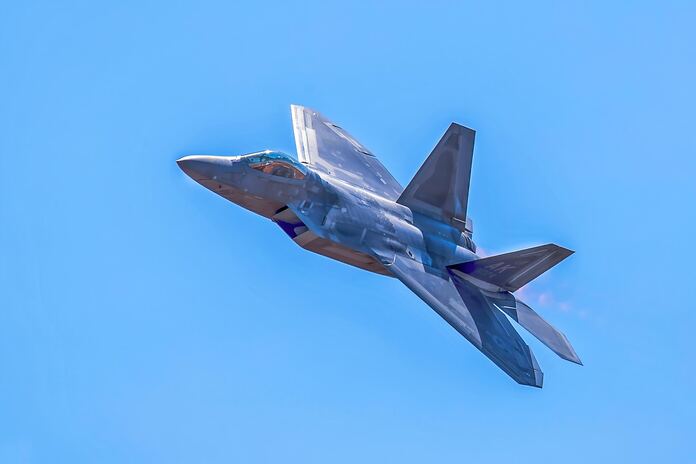Lockheed Martin Corporation (NYSE:LMT) recently won a $42 million contract modification to supply HELLFIRE II Missiles and Joint Air-to-Ground Missiles (JAGM) to the U.S. Army. The deal underscores Lockheed Martin’s pivotal role in the defense sector and its leadership in missile systems. The work will be conducted in Orlando, FL, and is scheduled to be completed by September 30, 2027. This contract award reflects the increasing demand for advanced missile technologies as global defense spending rises.
Key Features of Lockheed Martin’s Missile Systems
Lockheed Martin’s HELLFIRE II and JAGM missiles are designed to provide precision and flexibility on the battlefield. The HELLFIRE II missile, known for its precision-strike capabilities, can engage targets across a variety of missions, ensuring it remains a critical asset in modern warfare. Its flexibility allows for effective performance in diverse combat environments.
The JAGM, on the other hand, merges the advanced capabilities of both HELLFIRE and LONGBOW missiles into one system. With its fire-and-forget feature, JAGM enhances combat effectiveness by allowing operators to rapidly strike multiple targets while maintaining their safety. This combination of power and versatility makes Lockheed Martin’s missile systems crucial for defense operations, especially in rapidly evolving global threat environments.
Growing Defense Needs Boost Demand for LMT
The global military landscape is shifting, with increased tensions, terrorism, and border disputes driving governments to invest heavily in defense. As a result, spending on advanced military systems, particularly missiles and missile defense systems, has surged. Lockheed Martin, as a leading manufacturer in this sector, has seen a consistent inflow of orders from both the Pentagon and allied nations.
Lockheed Martin’s Missile and Fire Control division continues to expand its international footprint, conducting business in over 50 countries. With advanced missile programs like the Patriot Advanced Capability-3 and the Terminal High Altitude Area Defense, Lockheed Martin is positioned to meet growing global demand for cutting-edge missile technologies.
Market Forecast: Expanding Missile Defense Sector
The future of the missile defense market looks promising. Mordor Intelligence predicts a 5% compound annual growth rate (CAGR) for the missile and missile defense systems market from 2024 to 2029. This growth is attributed to rising military conflicts and the increasing need for advanced missile technologies across the globe.
Lockheed Martin is well-placed to capitalize on this growth, given its extensive portfolio of high-performance missiles. Programs like the Precision Strike Missile, the Joint Air-to-Surface Standoff Missile, and the Long Range Anti-Ship Missile highlight the company’s leadership in missile technology. The latest $42 million contract for HELLFIRE II and JAGM further strengthens Lockheed Martin’s growth trajectory.
LMT Stock’s Growth Prospects Compared to Competitors
Lockheed Martin’s recent contract win adds to its already robust portfolio, positioning it for continued growth in the defense sector. In the past three months, LMT stock has outperformed, gaining 25.3% compared to the industry’s average growth of 7.3%.
Other key players in the defense space are also capitalizing on the growing demand for missile systems:
Northrop Grumman (NYSE:NOC): Northrop Grumman’s supersonic AARGM-ER missile and its advanced missile defense technologies have positioned the company for long-term growth, with a projected earnings growth rate of 8.7%. The Consensus Estimate forecasts a 5.4% increase in NOC’s 2024 sales.
RTX Corporation (NYSE:RTX): Known for its popular Patriot and SM-6 missile defense systems, RTX Corporation is set to see continued demand, with an expected 10.4% earnings growth rate. The company’s 2024 sales are projected to grow by 7%.
Boeing (NYSE:BA): Boeing’s expertise in missile defense, including the Ground-based Midcourse Defense and Aegis Ballistic Missile Defense systems, is driving its growth. Boeing’s 2025 sales are expected to increase by 21.7%, reflecting its strong position in the defense market.
Is Lockheed Martin a Good Investment Now?
With its recent contract win and strong market position, Lockheed Martin is poised to continue benefiting from the growing demand for advanced missile systems. Its premium portfolio of defense technologies, combined with a solid international presence, makes LMT a key player in the global defense industry.
Investors have responded positively to Lockheed Martin’s recent growth, as evidenced by the company’s stock outperformance. However, as with any defense contractor, there are risks associated with government budget allocations and geopolitical uncertainties. Investors should weigh these factors when considering Lockheed Martin as a long-term investment.
Featured Image: Unsplash © John Torcasio









